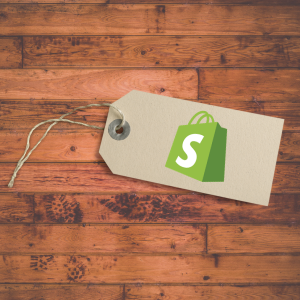As a Shopify shop owner you are looking to find anyway to get a leg up on your competition and increase sales. That’s not rocket science.
But, sometimes in that mind-set you implement tactics without fulling knowing the ramifications positive and negative that they have. Tags are a perfect example of something that looks like a great idea, and is actually extremely detrimental to all sites’ SEO efforts. Do Shopify tags help SEO?
Let’s walk through it.
What are Shopify Tags?
They are simply a filtering system to assist users navigating items effectively and quickly. An example of this would be a clothing store. You could create tags for color, size or type of clothing. Then, a visitor to your Shopify store would be able to search via those types of tags.
Let’s be honest we all shop on Amazon, you know exactly how the left rail navigation works.
But, do Shopify tags help SEO? Now, that we know WHY they exist (and note NOTHING was said about SEO), let’s answer this question.
Do Shopify Tags Help SEO?
No. It can’t get any more simple. They actually hurt SEO pretty significantly if they are utilized unless you have an amazing developer that can fix the issue. Why?
The simple answer is duplicate content. Every time you apply a tag to a product you create a duplicate pages of that product. The search engines do NOT like duplicate content – it’s one of the worst mistakes you can get dinged for by the search engines. Here’s an example.
You have a t-shirt called “Halloween Jill.” You apply the following tags to that product in the backend of Shopify:
- Women’s Small
- Women’s Medium
- Women’s Large
- Men’s Small
- Men’s Medium
- Men’s Large
- Halloween
- Novelty T-shirts
That means the main URL is created for the “Halloween Jill” t-shirt is created and then also 8 other URLs are created – one for each tag.
To the search engines this looks like there are 9 copies of the same t-shirt. Let’s say this store has only 50 products for sale and on average each one has 8 tags assigned to it. You have yourself a migraine on your hands and a site that the search engines will not rank well.
How Not to Use Tags
Tags aren’t bad. There certainly is a valid argument to be made to utilize the filtering system to make a store visitors’ life easier. However, our experience shows that vast majority of Shopify owners don’t use them the correct way. Let me explain.
The vast majority of Shopify sites we see have a landfill of tags being used. They are so overwhelming they are not helpful to visitors. This is a tale as old as time (well at least as old as websites).
People add tags as they think of them, because they think the more tags they have the more visitors they will get. It’s what we call the shotgun approach. You spray the largest area in the hopes of getting a visitor/sale.
Sadly, this approach no longer works in Digital Marketing. I’m sure you’ve seen the articles about “niching down,” etc. Defining your target audiences and then catering to them is the best and most effective way to build and maintain business online.
How to Use Shopify Tags to Not Hurt Your SEO
Alright, now that you know tags have absolutely ZERO SEO benefit and can be a very large ding to your site and SEO efforts, let’s talk about solutions.
Tags being used to help a visitor navigate your site is a great tool. Think of tags like blog categories. You want them general enough to act as umbrella for a lot of things, but specfic enough to help a visitor navigate quickly to what they want.
Get out of the “owner” mentality and get in the shopper mentality. What would be helpful to you? When in doubt look at other online retailers in your space – Amazon, Target, Fanatics.com, Etsy, etc. See what they have, and if you can copy it or improve it.
Here’s an example of a good use of tags:

I know you are thinking, OK, but how do I stop the duplicate content. You will need a developer for that. Sadly, the theme you are using on your Shopify site has a major impact on how to execute this.
Meaning I can’t say tell a developer to go to this file and make these 3 changes, hit save and Voila! Each theme is unique enough that there is not a universal set of steps to the solution.
That’s OK, because any good Shopify developer can figure out the unique steps for your theme, because the end goal is vanilla. They get asked to fix duplicate content all the time. Here’s what you do:
- Set the tag pages to “No-Index”
Simple right? Right.
The key here is remembering as you add new products and / or new tags you have to add the “No-Index” to each duplicate URL.
Our advice would be to weigh how many new products you add to your site per month/year and the cost of a developer to set those duplicate URLs to “no-index” to determine the cost-benefit to utilizing the tagging feature in Shopify.
We love to help, so if you have any questions, please add them in the Comments section below.



